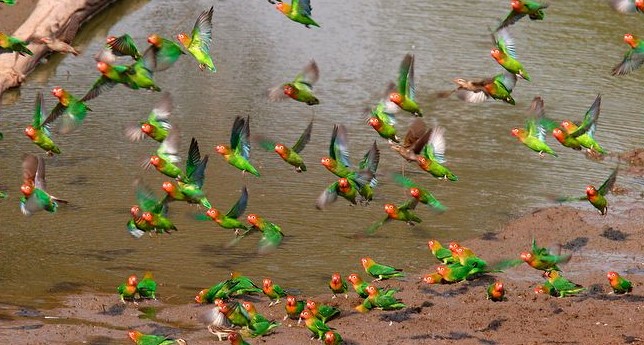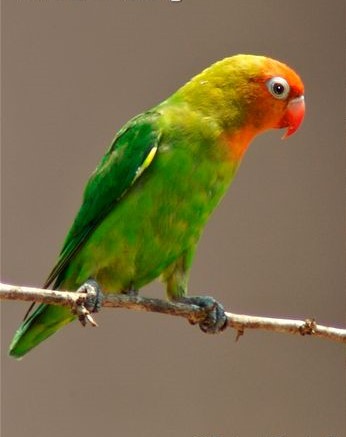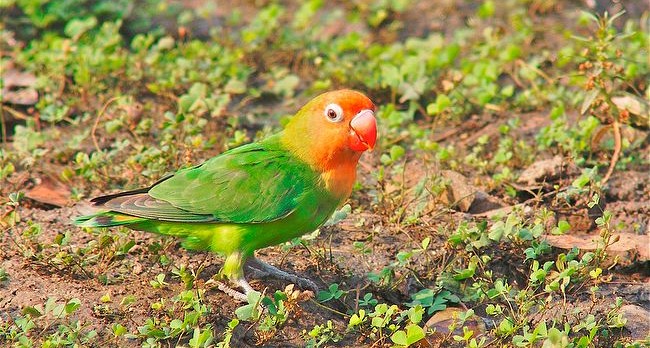By BirdLife Zimbabwe
Celebrating February, the month of romantic love, Lilian`s Lovebirds get their name from the strong bond which forms between a male and female. Pairs of lovebirds spend much of their time close together, regularly preening each other`s feathers. They are in fact monogamous (they have only one mate during a breeding season, or throughout the breeding life of a pair).

In Zimbabwe, Lilian’s Lovebirds occur in the Middle Zambezi below the escarpment from the Angwa and Hunyani Rivers westwards to Binga and Msuna although much suitable habitat has been lost within the Kariba Basin. They are often found in woodlands of Mopane trees but also inhabit Acacia woodlands on flood plains, forest bordering rivers and lakes and in fig trees.
Adult Lilian’s Lovebirds have a largely green body, with an orangey-red forehead and throat, blending into salmon-pink on the crown, face and upper breast. The hooked bill, suited to feeding on seeds, is bright red, and its eyes are dark red to brown. The narrow, pointed wings enable the lovebird to fly with both speed and manoeuvrability, and their high-pitched, twittering call can be heard in flight or when perched on a tree.

This brightly coloured lovebird has a gregarious nature and is usually observed in small groups, although sometimes up to 100 may gather. These large flocks only occur during winter, however, when the birds are not breeding.
Classified as Near Threatened (NT) on the IUCN Red List, and listed on Appendix II of CITES, the total population of Lilian`s Lovebirds has been significantly reduced by habitat loss and exploitation. Like many other lovebirds, this stunning bird is captured for the local and international cage-bird trade. In addition, the cereal-eating lovebird is considered a pest by farmers, and is persecuted as a result. (Lilian’s Lovebirds feed primarily on grass seed, particularly millet and sorghum seeds, which is picked off the ground, or plucked from the ripening heads of plants).

BirdLife Zimbabwe promotes the survival of wild birds and biodiversity in Zimbabwe and elsewhere for both their intrinsic value and for the enjoyment of future generations. This is achieved through programmes to increase awareness of biodiversity and the need to protect their habitats through policy, advocacy, education and training.
Biodiversity, ecosystems and ecosystem services – our natural capital – must be preserved as the foundations for a sustainable future for us all.
To learn more about BirdLife Zimbabwe`s Nature conservation programmes and to support them: www.birdlifezimbabwe.org or email: birds@zol.co.zw

